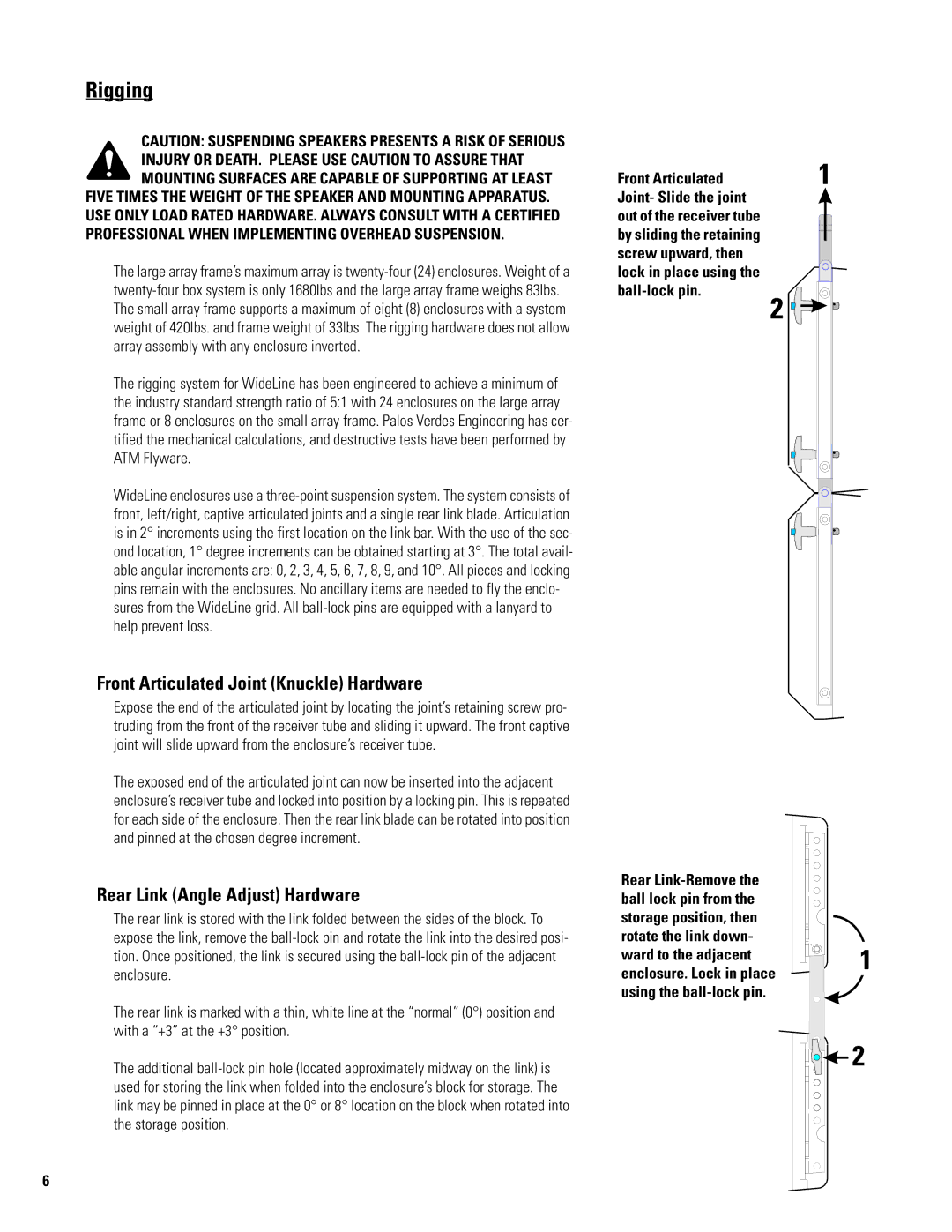WL 2102 specifications
The QSC Audio WL 2102 is an advanced, high-performance loudspeaker designed for professional audio applications. At the heart of its appeal is the integration of innovative technologies that deliver exceptional sound quality, reliability, and versatility. The WL 2102 is particularly well-suited for a variety of environments, including live performances, theaters, auditoriums, and corporate events.One of the standout features of the WL 2102 is its dual 10-inch low-frequency drivers, which provide powerful bass response and clarity across a broad frequency range. The speaker is engineered to deliver a frequency response of 50 Hz to 20 kHz, ensuring that it can reproduce both low-end punch and high-frequency detail effectively. This wide frequency range makes it an ideal choice for applications where nuanced audio reproduction is critical.
The WL 2102 utilizes QSC's proprietary DMT (Directivity Matched Transition) technology. This ensures that the sound is evenly distributed across the coverage area, providing consistent sound quality and minimizing feedback issues. DMT helps to maintain clarity and intelligibility, whether the audience is seated at the front or the back of the venue.
Another important characteristic of the WL 2102 is its robust construction. Built with a durable enclosure that can withstand the rigors of touring and live events, the loudspeaker features a high-frequency horn coupled with advanced waveguide technology. This design enhances the speaker's projection and allows for greater control over dispersion, making it easier to tailor sound to specific environments.
In terms of connectivity, the WL 2102 is equipped with versatile input options, ensuring compatibility with various audio systems. It can be used in both passive and bi-amped configurations, giving audio engineers flexibility in setup and sound design. Additionally, the speaker's built-in rigging points make it straightforward to install and deploy in both fixed and portable setups.
The WL 2102 is also designed with thermal protection and built-in limiters, safeguarding the drivers during extended use and ensuring reliability in high-demand situations. This attention to safety and performance underlines QSC's commitment to quality, making the WL 2102 a trusted choice for audio professionals.
In conclusion, the QSC Audio WL 2102 represents a blend of advanced engineering, powerful sound capabilities, and durable construction. Its array of features and technologies allows it to excel in a wide range of applications, making it a versatile and dependable solution for any audio engineer or performer seeking exceptional sound reinforcement.

